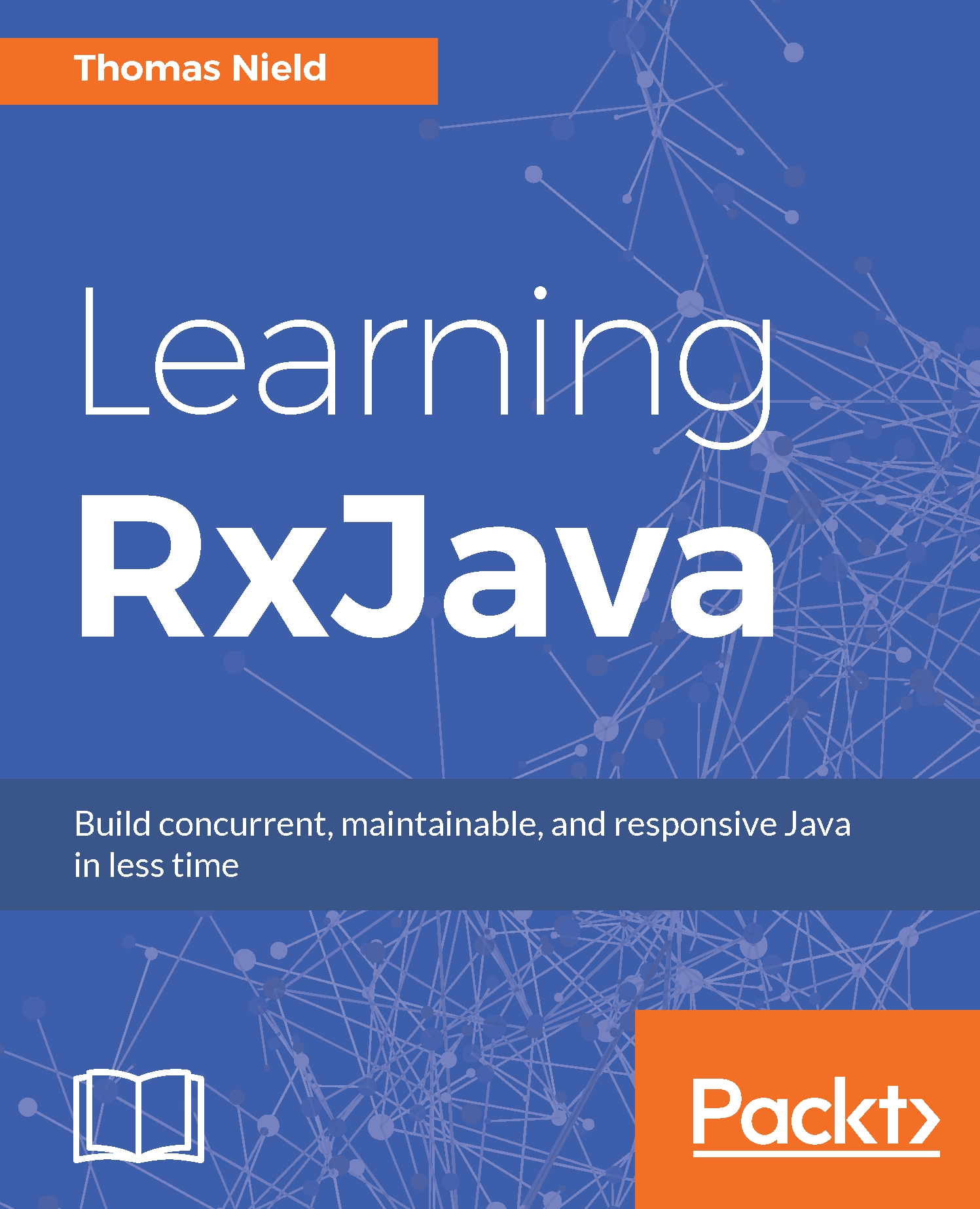In the previous chapter, you learned a lot about the Observable and Observer. We also covered a small number of operators, particularly map() and filter(), to understand the role of operators as well. But there are hundreds of RxJava operators we can leverage to express business logic and behaviors. We will cover operators comprehensively throughout much of this book, so you know which ones to use and when. Being aware of the operators available and combining them is critical to being successful using ReactiveX. You should strive to use operators to express business logic so your code stays as reactive as possible.
It should be noted that operators themselves are Observers to the Observable they are called on. If you call map() on an Observable, the returned Observable will subscribe to it. It will then transform each emission and in turn be a producer for...



